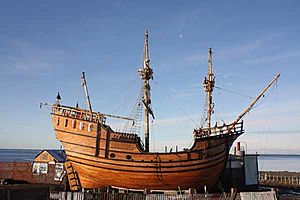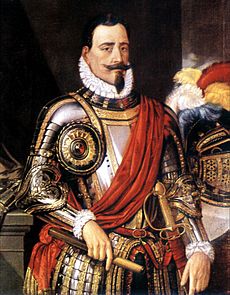Discovery of Chile facts for kids
The country we know today as Chile was first reached by a European explorer, Ferdinand Magellan, in 1520. He sailed through the famous Strait of Magellan, located at the southern tip of Latin America.
After Hernán Cortés conquered the Aztec Empire (1518-1521), a new wave of Spanish exploration began. This time, it moved towards the Inca Empire from 1532, led by Francisco Pizarro. The Spanish conquest of parts of Chile started around 1535. This period was marked by struggles for power among the Spanish and led to them settling in some areas of what is now Chile.
It's important to remember that the land was already home to many people. So, while Europeans "discovered" it from their point of view, the territory had been known and lived on by humans for about 16,000 years!
Diego de Almagro's Expedition (1536)
The first major Spanish attempt to conquer Chile was led by Diego de Almagro. He was one of Francisco Pizarro's main commanders. A rivalry between Almagro and Pizarro led Almagro to explore Chile.
Almagro was a governor of half of Peru, while Pizarro governed the other half and was also the viceroy of the entire colony. They argued over who first reached the city of Cuzco. This dispute pushed Almagro to seek new lands in Chile. He hoped that after conquering Chile, King Philip II would make him the Viceroy of Peru.
His expedition included hundreds of Spanish soldiers and thousands of Indigenous people who were forced to join. They traveled over 2,500 kilometers through the Andes mountains and the Bolivian Altiplano. Many men were lost during this difficult journey.
In March 1536, Almagro finally arrived in Chile. He began building small forts. The first meetings with the local people were very violent. The Mapuche tribe saw these newcomers as a great threat to their land. The Battle of Reinohuelen marked the end of Almagro's expedition in Chile. His forces were defeated and had to turn back, traveling through the harsh Atacama Desert.
After his return, Almagro's arguments with Pizarro started again. Pizarro took away Almagro's title and sentenced him to death. Almagro was executed in 1538.
Pedro de Valdivia's Conquests (1541–1553)
A new phase of the conquest of Chile began in 1540. This time, it was led by Pedro de Valdivia, another loyal commander of Pizarro. Valdivia would also lose his life during this expedition.
Chile had a bad reputation among the Spanish. There wasn't much gold or silver, and the local people were very strong fighters. Because of this, Valdivia could only gather about 150 Spanish soldiers and a few thousand Indigenous people in Peru for his journey.
He chose to take the same route Almagro had used on his way back: through the Atacama Desert. Valdivia then reached the valley of Copiapó. Here, he founded two of Chile's most important cities. These included the capital, Santiago del Nuevo Extremo, in 1541. (It became Santiago de Chile after independence in 1810). He also founded La Serena in 1544.
Spanish forces stayed in these towns while Francisco Pizarro sent more soldiers to Valdivia. In 1550, Valdivia was named governor of Chile. He continued his march south, fighting against the Mapuche tribes. Sadly, he was killed during the capture of Fort Tucapel in 1553.
Despite his death, Valdivia founded other Chilean cities. These include Concepcion in 1550, Valdivia in 1552, Los Confines, and Santiago del Estero in 1553. One of his commanders continued the conquest after Valdivia's death. The fight against the Mapuche people continued until 1561, when the Spanish conquest was mostly completed.
See also
 In Spanish: Descubrimiento de Chile para niños
In Spanish: Descubrimiento de Chile para niños
- Colonial Chile
- Incas in Central Chile
- Mapuche history




